
Turkey - Table of Contents ............................ Architecture Around the World
Hittite Art - Table of Contents
Hittite Art in Hattusa and Yazilikaya
Turkey
2014 Photographs
|
Hattusa
Deep in the heart of Anatolia [Turkey in Asia], approximately 93 miles east of Ankara and near the northern border of ancient Cappadocia, the center of a powerful empire was located: Hattusha [Hattusa], the Capital city of the Hittites. From about 1650/1600 to 1200 BC, the Great Kings of Hattusha ruled an empire that reached across the broad lands of Anatolia, extending at times even into the north of Syria; they conquered Babylon, and Troy was apparently one of their vassals. Besides Egypt and Assyria/Babylonia the Hittites were the third superpower of the Ancient Near East. - The Excavations at Hattusha (online December 2014)
|
|
Hattusa
The archaeological site of Hattusha [Hattusa], former capital of the Hittite Empire, is notable for its urban organization, the types of construction that have been preserved (temples, royal residences, fortifications), the rich ornamentation of the Lions' Gate and the Royal Gate, and the ensemble of rock art at Yazilikaya. Hattusha exerted dominating influence upon the civilizations of the 2nd and 1st millennia BC in Anatolia [Turkey in Asia] and northern Syria. The site [Hattusa], discovered in 1834, was not comprehensively excavated until 1906, which was the memorable date of the discovery of a copy of a peace treaty between Hattushili III and the Pharaoh Ramses II, which made possible the identification of Hattusha. Since then, joint efforts on the part of German and Turkish archaeologists have made decisive progress in knowledge of the Hittite capital. - UNESCO World Heritage Center (online December 2014)
|
Hattusa 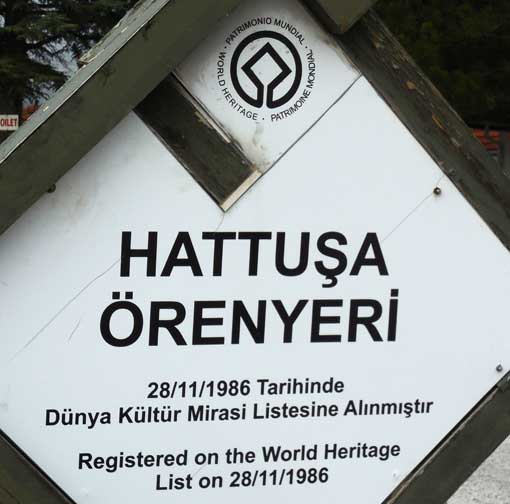 Photo courtesy of Nancy LaChiusa ... © 2014 Nancy LaChiusa 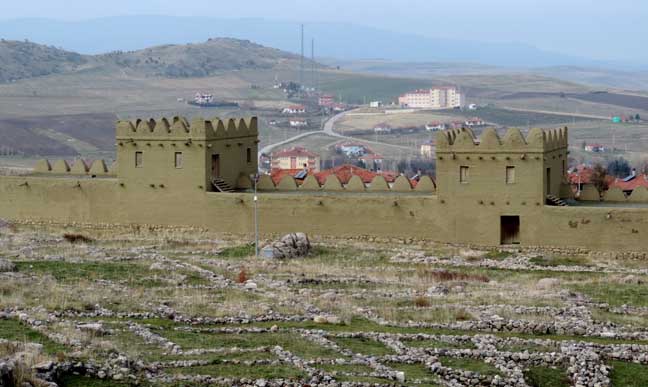 Hattusa: The city was surrounded by a system of double walls forming a perimeter of roughly 8 km. It was protected at the east end by the Kayalı Boğäz outpost, 1.5 km from the Royal Gate. ... Note partially excavated building walls. 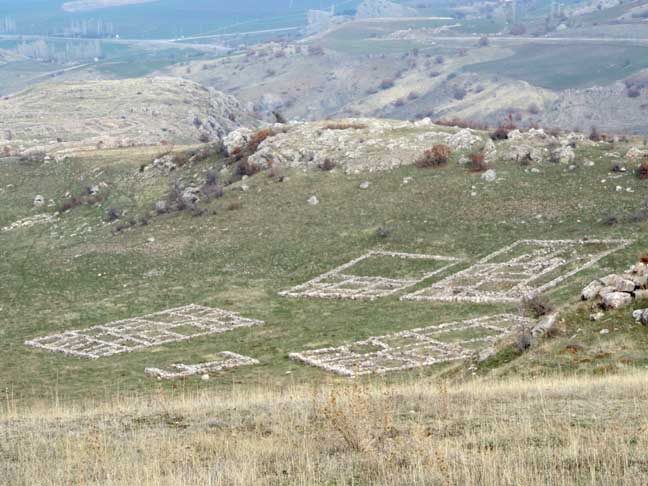 Hattusa 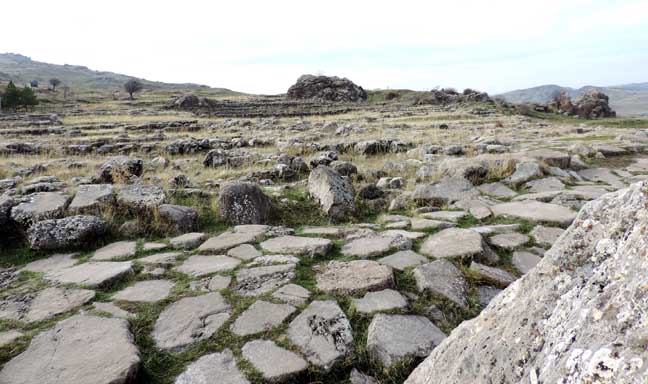 Hattusa: Much of the site needs excavation 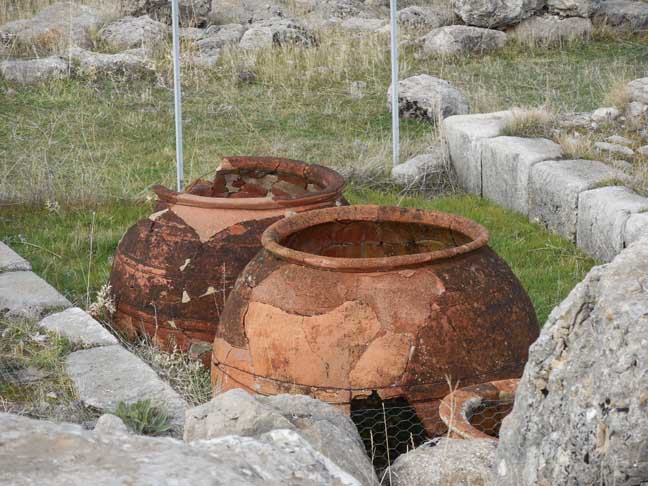 Hattusa - amphoras for long term grain and other food storage Photo courtesy of Nancy LaChiusa ... © 2014 Nancy LaChiusa. 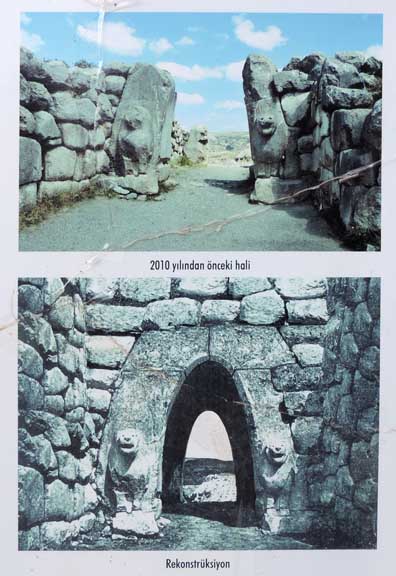 Hattusa: Lions' Gate 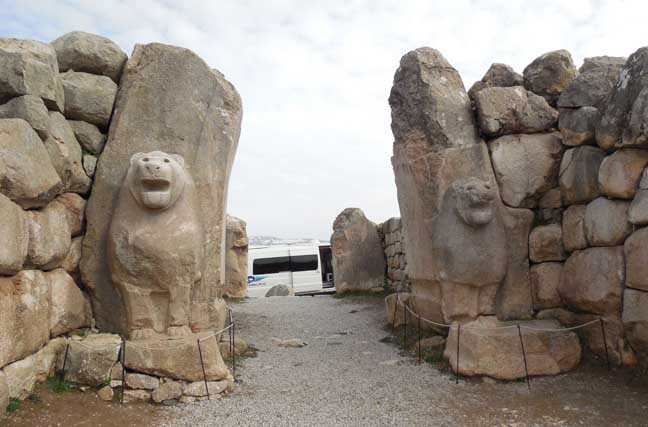 Hattusa: Lions' Gate - Detail #1 Photo courtesy of Nancy LaChiusa ... © 2014 Nancy LaChiusa. 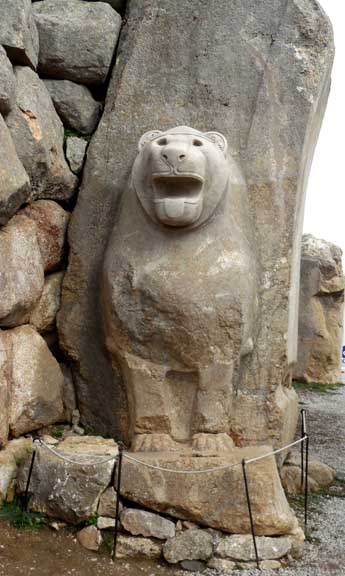 Hattusa: Lions' Gate - Detail #2 ... Reproduction lion's face. Photo courtesy of Nancy LaChiusa ... © 2014 Nancy LaChiusa. 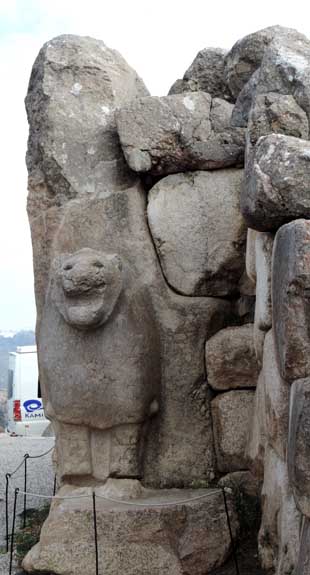 Hattusa: Lions' Gate - Detail #3 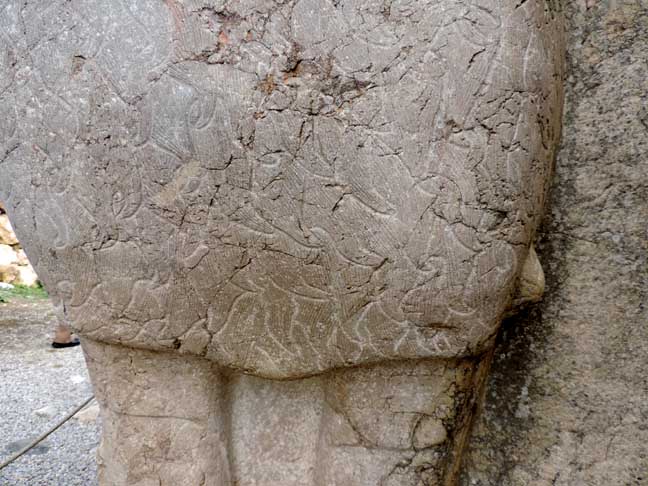 Hattusa: Lions' Gate - Detail #4 ... Matted lion fur 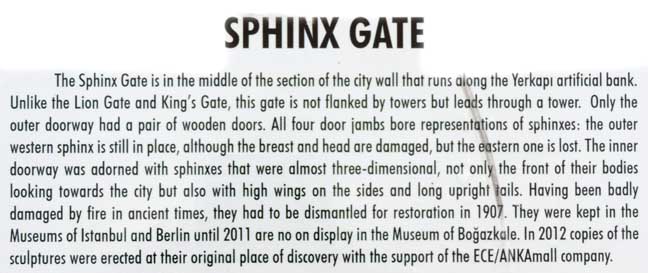 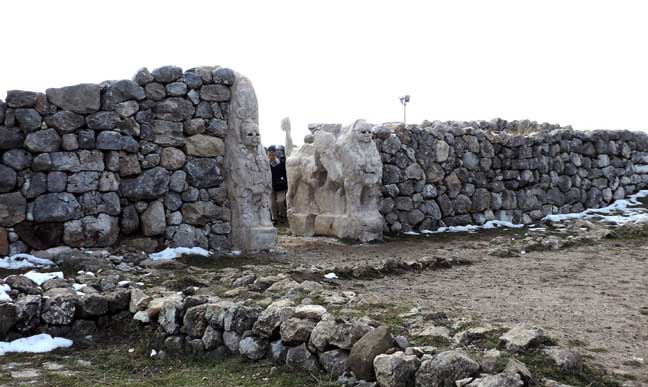 Hattusa: Sphinx Gate 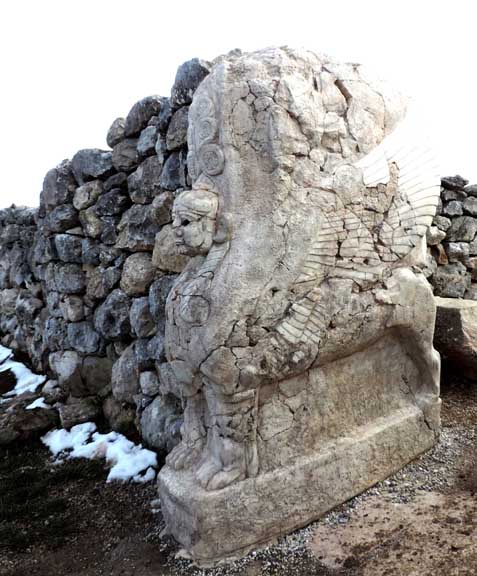 e eHattusa: Sphinx Gate - Detail #1 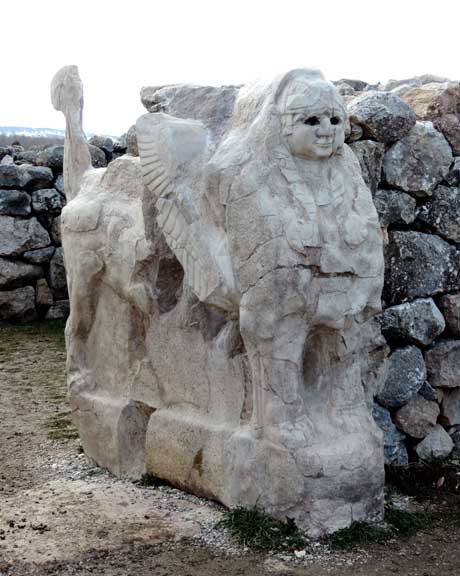 Hattusa: Sphinx Gate - Detail #2 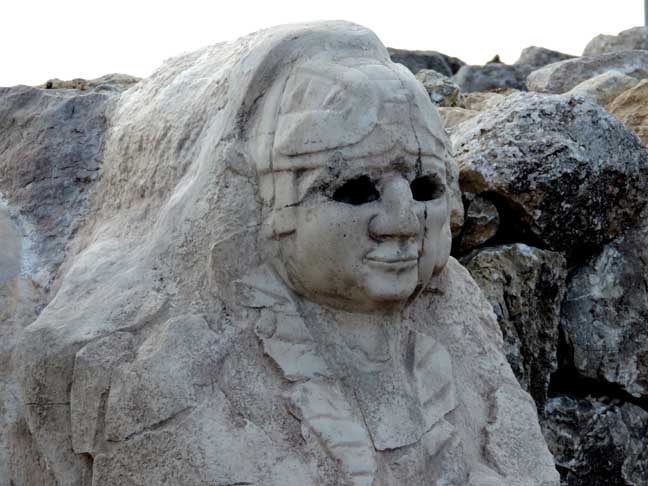 Hattusa: Sphinx Gate - Detail #3 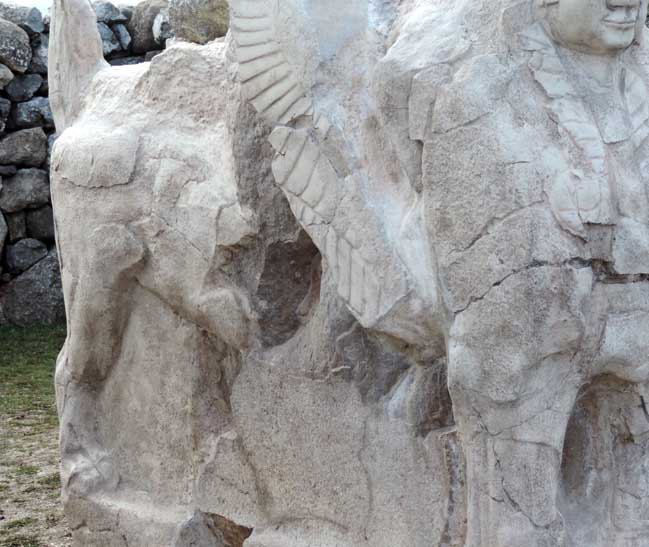 Hattusa: Sphinx Gate - Detail #4 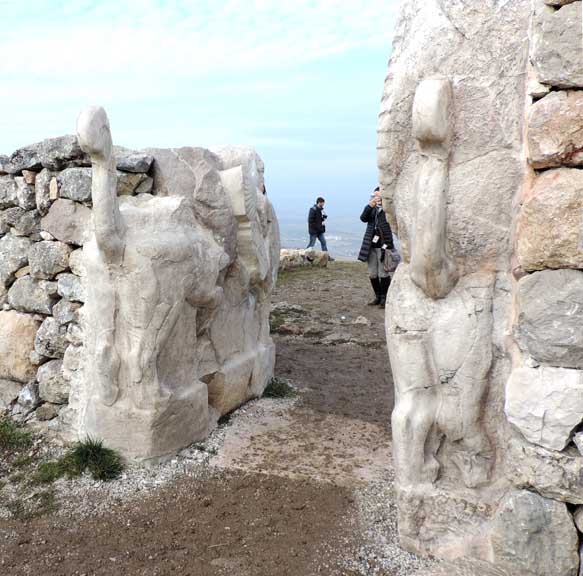 Hattusa: Sphinx Gate - Detail #5 |
|
Yazilikaya Situated among low rolling hills, 170 kilometers east of Ankara and adjacent to the small town of Bogazkale, stands the ancient Hittite sanctuary of Yazilikaya. Meaning 'inscribed rock' in the Turkish language, Yazilikaya is an open air, natural rock shrine at a place where a spring of fresh water once flowed. The site has characteristics similar to other Anatolian spring-sanctuaries, and may well have been a place of worship for hundreds or thousands of years before the rise of Hittite power. |
|
Yazilikaya
The sanctuary of Yazilikaya lies outside the ancient city of Hattusha,
near where a spring issued from the rocks and flowed through a small
alcove. Shaded by trees and carpeted with grass and flowers, the power
and beauty of the alcove must have inspired the Hittites and earlier
peoples to worship there. It is probably that by the 15th -13th
centuries BC several temples were built at the site, although crumbling
foundations are all that remain to be seen.
The principal interest of Yazilikaya, however, lies not in the fallen temple buildings but in the figures of deities carved on the rock walls of the two natural chambers of the roofless sanctuary. The west wall is adorned with reliefs of gods, while those on the east wall are devoted to goddesses. |
Yazilikaya 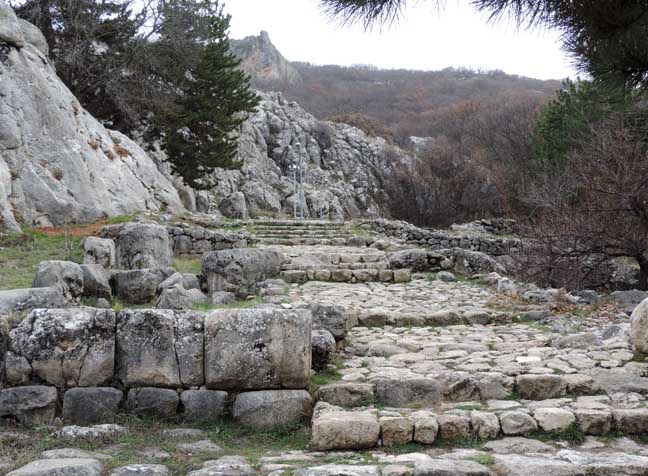 Yazilikaya: Thev great sanctuary of Yazılıkaya, whose walls decorated with bas-reliefs are the undisputed masterpiece of Hittite art. 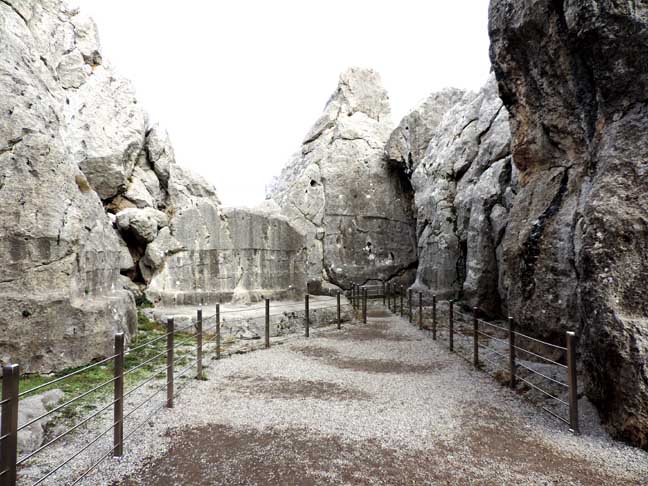 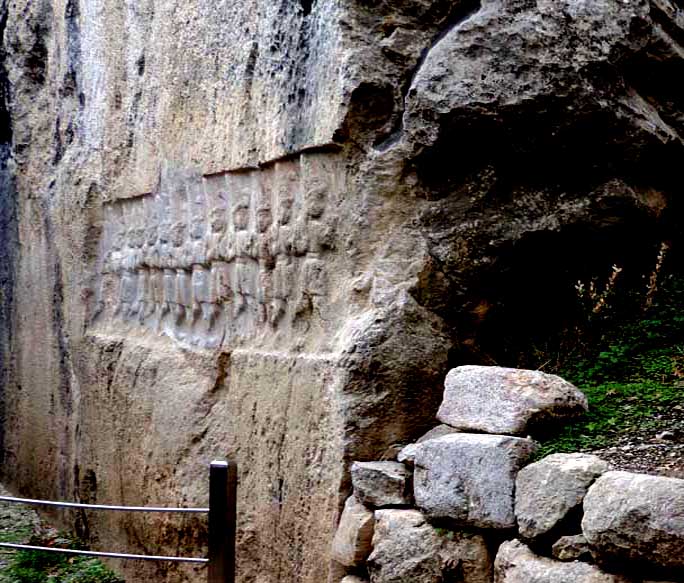 Yazilikaya Although the site has been in use since the 15th century BC at least, not until the 13th century did the long procession of gods and goddesses take their place here, chiseled onto the rock faces by Hittite sculptors. It apparently represents the "House of the New Year's Celebration," a House of the Weather God where festivities were held to honor all the pantheon at the coming of the New Year and the beginning of spring. Two details below: 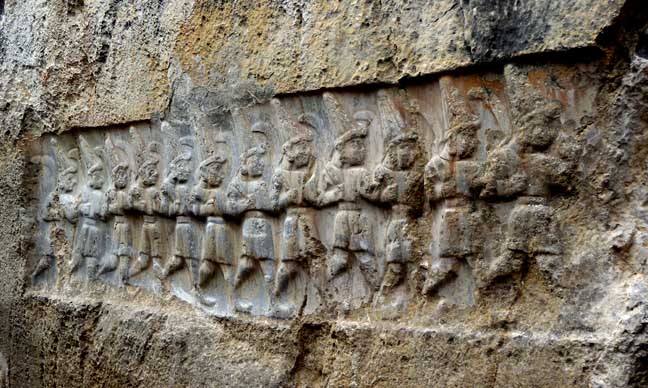 Yazilikaya Photo courtesy of Nancy LaChiusa ... © 2014 Nancy LaChiusa. 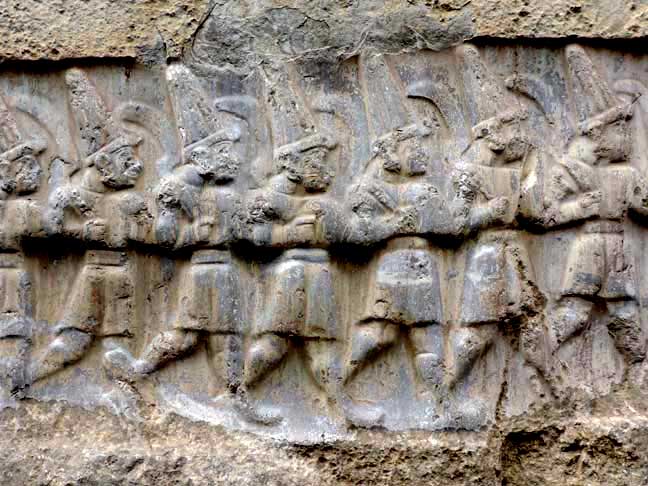 Yazilikaya 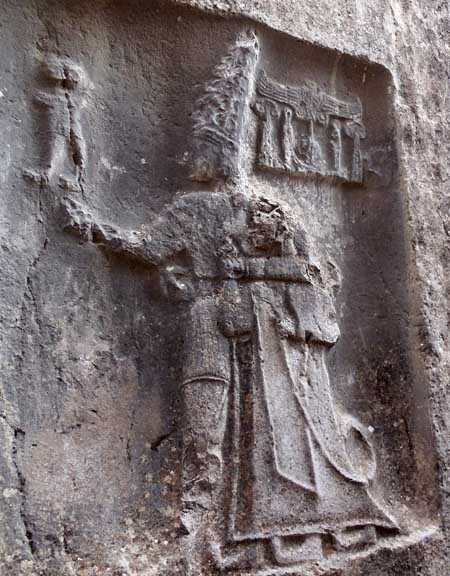 Yazilikaya Photo courtesy of Nancy LaChiusa ... © 2014 Nancy LaChiusa. 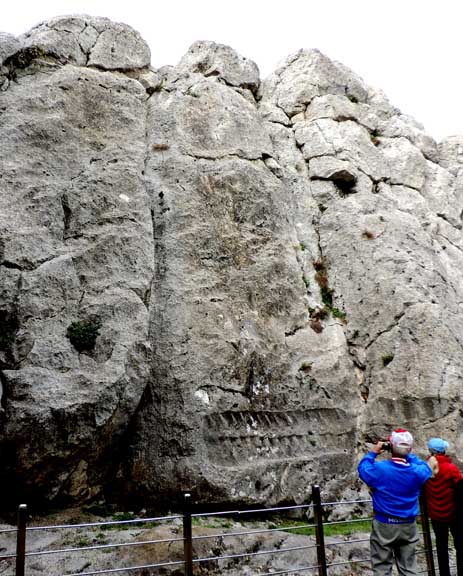 Yazilikaya 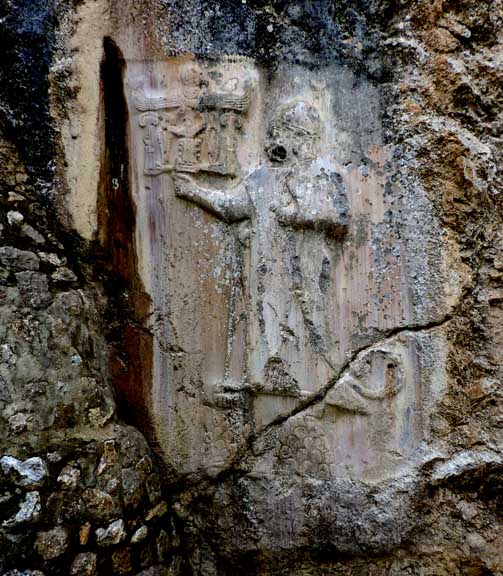 Yazilikaya ... Two details below: 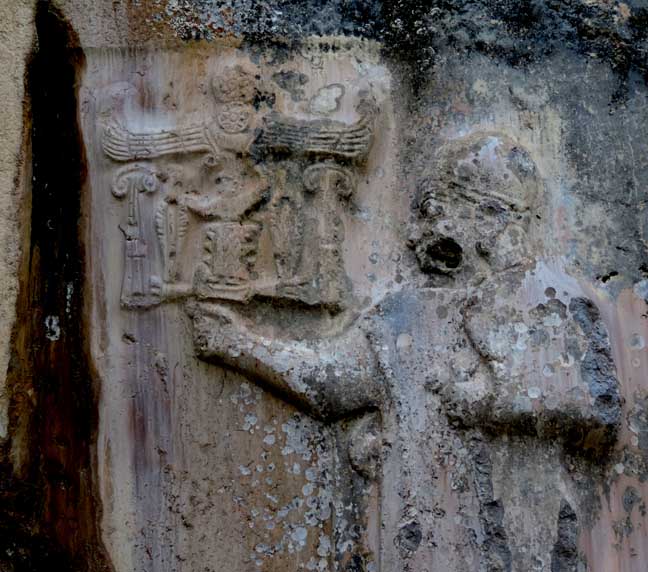 Yazilikaya 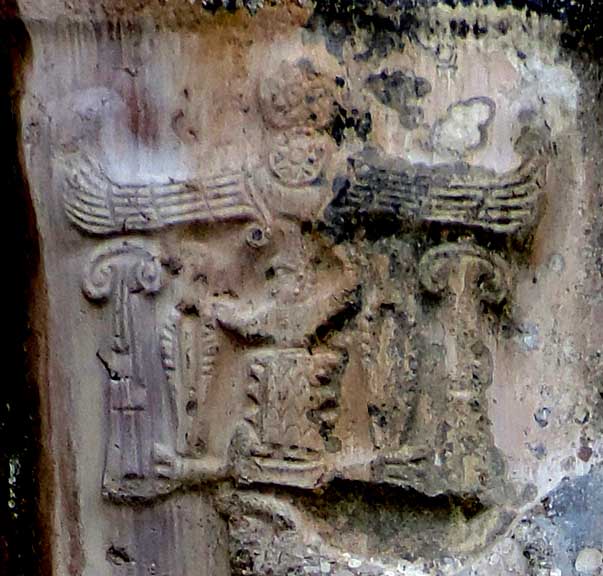 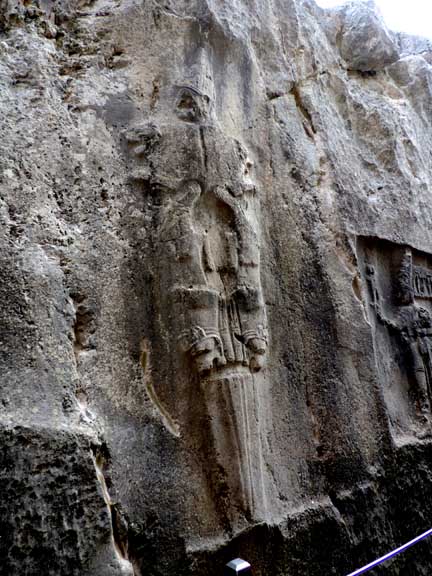 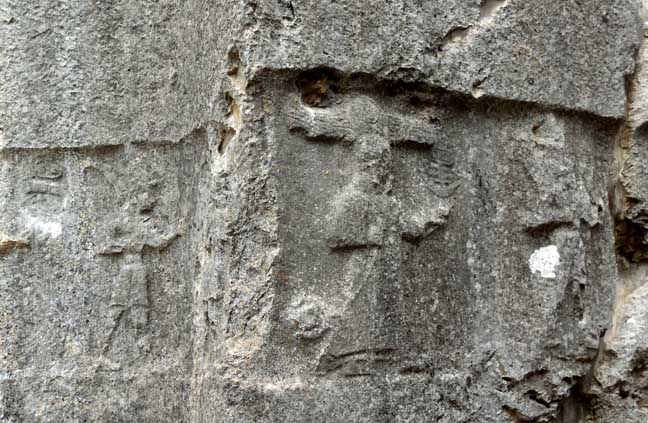 Photo courtesy of Nancy LaChiusa ... © 2014 Nancy LaChiusa. |
